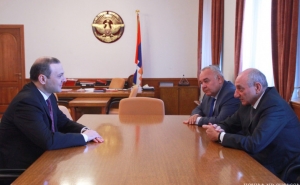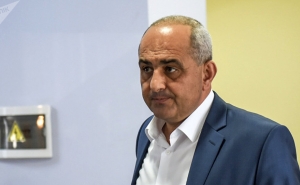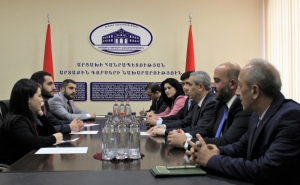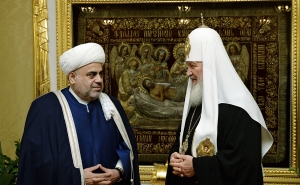 From Soviet Rule to Present Days: Struggle of Artsakh People for the Right of Peaceful Existence in Their Homeland
From Soviet Rule to Present Days: Struggle of Artsakh People for the Right of Peaceful Existence in Their Homeland
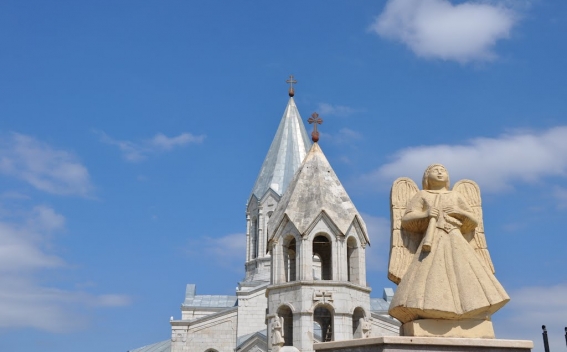
The Armenians, one of the ancient nations in the world, throughout the years of their existence were and continue struggling for their right of peaceful existence in their historical homeland. The fact that in the 21st century Armenians managed not only to survive but have two independent republics, the Republic of Armenia and the Republic of Artsakh (otherwise known as Nagorno-Karabakh Republic) is a vivid proof of the success of the centuries long struggle that the Armenians were forced to fight to preserve their religion, culture and language.
Notwithstanding the victory and the existing achievements, Armenians are still in a continuous struggle for their independence. The Armenians in the Artsakh Republic continue to surprise the world by their strong will and irresistible courage that helps them not only to keep their border unconquerable but to continue to flourish as a nation and a state developing their culture, religion, language and democratic political institutions.
One will ask how the Artsakh Armenians manage to be in a continuous struggle for more than two decades and still not become exhausted. The answer is clear: the fight of the Artsakh people is not limited to these twenty years: Armenians in Artsakh have been in the continuous long struggle since the very establishment of the first Armenian kingdom. So what is the path of that struggle the Armenians in Artsakh Republic managed to overcome to reach to our days?
In our previous article entitled "From Avarayr to Ottoman Invaders: Struggle of Artsakh People for the Right of Peaceful Existence in Their Homeland" the brief history of the struggle of Artsakh people from the times of Urartu to the attempts of invasion of Ottoman Turks was presented. In this article the struggle of the Artsakh people from the times of Russian Empire to our present days is to be presented.
After Eastern Armenia, including Artsakh, was conceded by Persia to Russian Empire (Treaty Of Gulistan, 12 October, 1813), relative peace was established for Artsakh people. As always this time also the Armenians in Artsakh not only preserved but tried to further develop their national identity, religion and culture. Fortress town of Shushi became the center of Artsakh and later turned into one of the key cradles for the Armenian culture, where traditional Armenian crafts such as carpet-making and silk-spinning, education and printing was developing. At that time in Shushi there were 10 educational centers and 5 printing houses. The seat of the Artsakh Diocese has been moved to St. Amenaprkich (Holy Savior of All) Ghazanchetsots Cathedral in Shushi.
However, even during this relative peace, the Artsakh people were forced to be on continuous alert because of the threat coming from the Tatar tribes (present day Azerbaijanis), who got assistance from the Ottoman Empire on their path to political socialization and nation-building and were inspired by the pan-Turkic ideologies. Due to geographically dominant position of Artsakh, the branches of pan-Turkic organizations were opened there. The evidence that those organizations were directly supported by the Ottoman Empire is a number of letters sent from the Ottoman Empire to the Caucasian Tatars. One of those letters sent from one of the members of the Central Committee of the newly emerging Committee of Union and Progress (secret society established as the "Committee of Ottoman Union"), Behaeddin Shakir Bey to the "Muslim Brothers of Caucasus" particularly reads: "Armenians are our enemies. Besides, they are the fiercest obstacle on your way to get freedom from Russians. Make a certain plan on weakening them."
The existing tension between the Armenians and Caucasian Tatars escalated in 1905, when Tatars attacked the Armenians in Shushi. On the occasion, on September 13, 1905, the Paris edition of the New York Herald published an article, entitled "Holy War Waged," which reads:
"... The districts of Zangezur and Jebrail are swarming with Tartar (Tatar –E.E.) bands under the leadership of chiefs, and in some cases accompanied by Tartar police officials. Green banners are carried and a 'Holy War' is being proclaimed. All Armenians, without distinction of sex or age are being massacred."
After the collapse of the Russian Empire in 1918 in order to defend their independence from newly formed Azerbaijani Republic and Ottoman Turks Artsakh people formed their own National Council, Government, armed forces and other attributes peculiar to the established republic. The attempts of the Artsakh people to defend their right of peaceful existence in their homeland this time also received harsh response from the Turkish and Azerbaijani forces, who organized massacres of Sushi in 1920 as a result of which the Armenian population in Shushi decreased by 65 percent, while beautiful cultural and administrative buildings were burned to the ground. 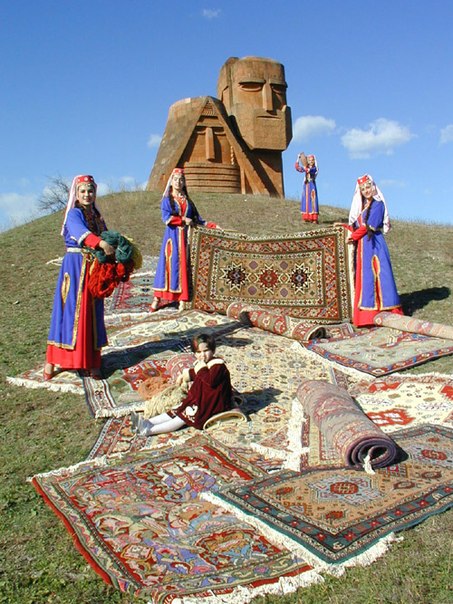
Later Bolsheviks (who came to power after October 1917 Russian Revolution and formed the Communist Part of the Soviet Union) embarked on resolving the Artsakh issue, which was discussed by the newly-established seven-member Committee, Caucasus Bureau also known as the Kavburo under the supervision of the Joseph Stalin (future Soviet ruler). On July 4, 1921 Kavburo voted in favor of passing Artsakh to the newly created Soviet Socialist Republic of Armenia. However the other day Kavburo changed its decision and in a day decided to give Artsakh to Soviet Socialist Republic of Azerbaijan, which was conditioned by certain political interests.
In 1923, the Nagorno-Karabakh Autonomous Oblast (NKAO) was formed, the population of which comprised of 94 percent Armenians. Through the whole period of the existence of the Soviet Union, the Azerbaijani leadership economically, culturally and politically suppressed the Armenian population of Artsakh, trying to break their connections with the Soviet Socialist Republic of Armenia. During the last years of the Soviet Union the Artsakh people continued to resist the Azerbaijani repressions. The Azerbaijani authorities, as always loyal to their strategy, tried to harshly suppress the resistance of Artsakh people organizing massacres of Armenians in Sumgait, Baku and in other Armenian populated places. Getting no help from the Soviet authorities as well as from the international community, Artsakh people once again became owners of their fate and following the rules of the Soviet legislation, particularly the law of 3 April 1990 entitled "Procedure for Decisions about Union Republics leaving the USSR", organized a referendum and declared their independence. The articles 2 and 3 of the law particularly reads:
"The decision on secession of a Soviet Republic from the USSR is made by the will of the people of that Soviet Republic by means of a referendum."(Article 2)
"In case the Soviet Republic has autonomous republics, autonomous regions or autonomous territories within its borders, referendums are to be conducted separately in each of the autonomies. The people residing in the autonomies are given a right to independently decide whether to remain in the Soviet Union or in the seceding Republic as well as to decide on their state legal status." (Article 3)
In response the Azerbaijani forces started to attack the peaceful population of NKAO from its stronghold Shushi, where they concentrated large amount of militia and ammunition. This time again the Artsakh people received no help from the international community, only the Armenians from the Republic of Armenia hurried to help their compatriots. As a result of which Shushi operation was organized, which was later known as "The Wedding in the Mountains" In spite of the small number of soldiers and weapons, the Armenians this time also because of their courage and the acknowledgment that they are fighting for their right of peaceful existence in their homeland liberated Shushi and gained privilege over the Azerbaijani forces.
In May 1994, both sides of the conflict, Azerbaijan and Nagorno-Karabakh, signed an open-ended ceasefire agreement, to which Armenia joined as well. Since then the situation of no war and no peace continues and the Artsakh people still have to fight for their peaceful existence. In the presence of the militaristic stance of the Azerbaijani authorities (president Aliyev went so war to declare war against the Armenians on Twitter), the mistrust of the Artsakh people towards the Azerbaijani government increases day by day, which hinders the development of mutual trust between the two nations and any progress on the negotiation table.
In spite of the permanent threat of the attack by the Azerbaijani side the Artsakh people continue to live in their land and fight for their homeland. Nowadays they have their independent Republic which continues to develop democratically, culturally and economically. Each resident of Artsakh is proud to live in free, independent Artsakh Republic, because each of them acknowledge it quite well that it is the reward for their centuries’ long struggle.
Other materials on this subject
- Russian forces have clearly failed in their duties: senators press Biden Administration to break Azerbaijan’s blockade The United States cannot stand aside while the Aliyev regime callously threatens the lives of Nagorno-Karabakh’s citizens, and must hold Azerbaijan to account for blocking a civilian population’s access...
- US calls for the full restoration of free movement through the Lachin Corridor "We remain concerned about impeded access to the Lachin Corridor and the humanitarian implications of this situation. This sets back the peace process and undermines international confidence. We call for...
- Azerbaijani forces violate the ceasefire in Artsakh The ceasefire violation was reported to the command of the Russian peacekeeping troops.
- Azerbaijani units violate ceasefire in several directions, Artsakh’s Defense Ministry says The Armenian side has no losses. The incidents of ceasefire violations were reported to the command of the Russian peacekeeping troops.
- Russian Diplomat Reassures Armenians Over Corridor In Karabakh "The parties are in direct contact, and I assure you that the peacekeepers will not move a single centimeter until there is a new corridor," Seleznyov said.
-
 17:08
17:08The regular session of the Anti-corruption Policy Council takes place in Jermuk
-
 15:05
15:05The Prime Minister sends congratulatory messages to the supreme leader of Iran and the President of Iran
-
 11:11
11:11Armenia sends earthquake aid to Turkey
-
 10:43
10:43Commemoration of the Pontiff St. Sahak Partev
-
 09:16
09:16Some roads are closed and difficult to pass in Armenia
-
 19:55
19:55Phone conversation of the Foreign Minister of Armenia with the U.S. Assistant Secretary of State for European and Eurasian Affairs
-
 18:30
18:30Prime Minister Pashinyan and President Khachaturyan meet
-
 18:20
18:20Ararat Mirzoyan with Co-Chairman of the OSCE Minsk Group of France Brice Roquefeuil
-
 17:01
17:01Humans could land on Mars within 10 years, Musk predicts
-
 16:45
16:45France, US urge 'immediate' end to Nagorno Karabakh blockade
-
 16:01
16:01Blockaded Nagorno Karabakh launches fundraiser to support quake-hit Syria
-
 15:59
15:59Earthquake death toll in Turkey rises to 18,342
-
 15:43
15:43Ararat Mirzoyan Held a Telephone Conversation with Sergey Lavrov
-
 15:06
15:06French president rules out fighter jet supplies to Ukraine in near future
-
 14:47
14:475 Day Weather Forecast in Armenia
-
 14:44
14:44President Vahagn Khachaturyan wrote a note in the book of condolences opened in the Embassy of Syria in Armenia
-
 14:20
14:20Azerbaijan’s provocations impede establishment of peace and stability – Armenian FM tells Russian Co-Chair of OSCE MG
-
 12:57
12:57France representation to OSCE: Paris calls on Azerbaijan to restore freedom of movement through Lachin corridor
-
 11:40
11:40Command of Kosovo forces highly appreciated preparation of Armenian peacekeepers
-
 10:16
10:16The United States withdrew from sanctions against Syria for six months the provision of assistance after the earthquake
day
week
month
Humidity: %
Wind: km/h



